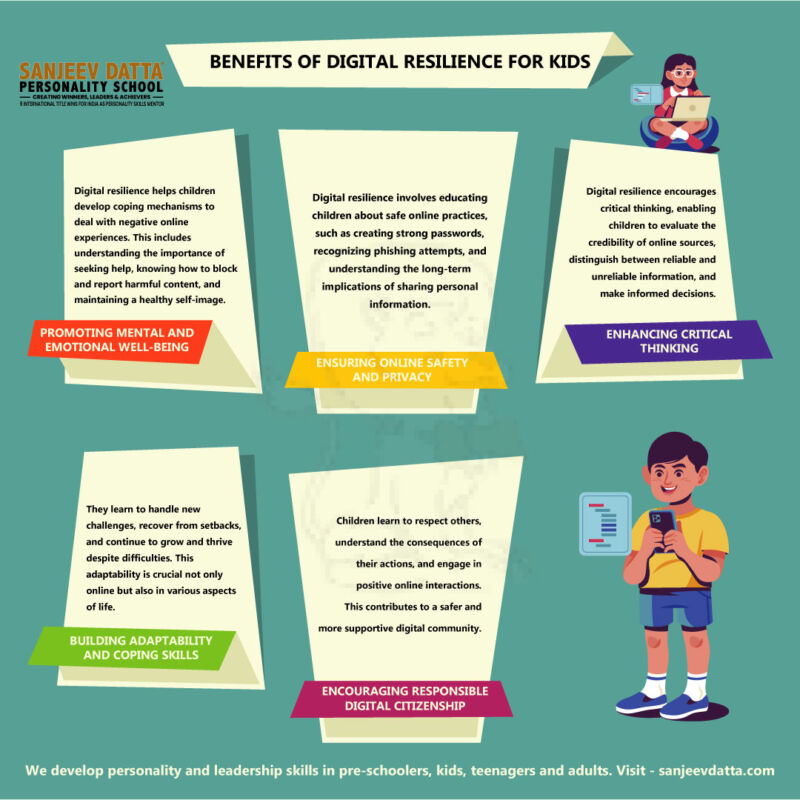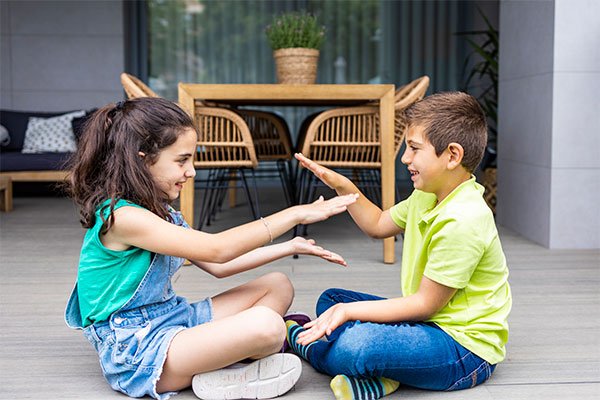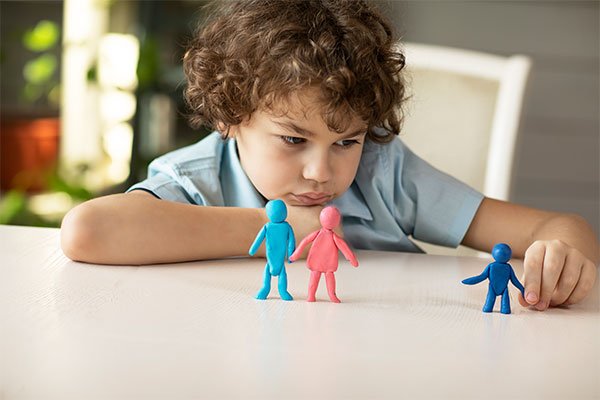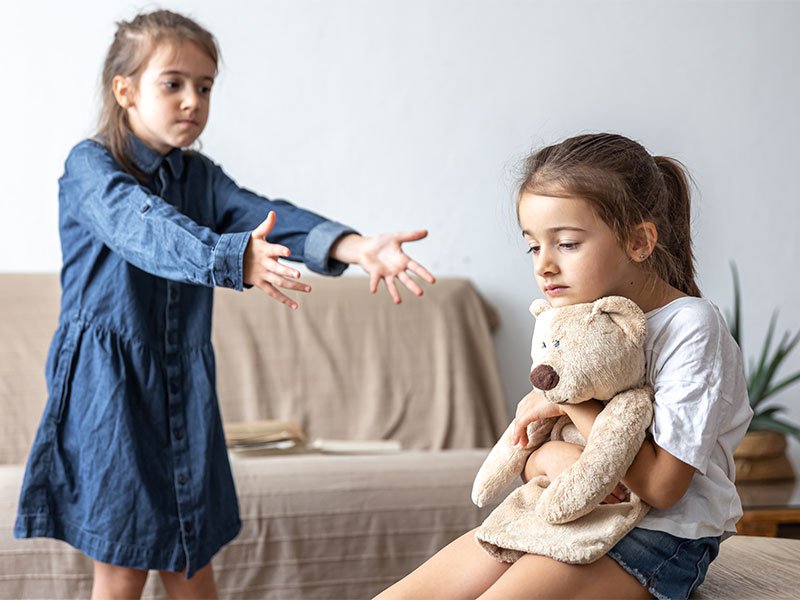Conflict is a universal experience—whether among siblings squabbling over toys, classmates competing for turns on the playground, or peers debating differing ideas in a group activity. While occasional disagreements are a natural part of childhood, equipping young learners with effective conflict management tools can transform these moments into powerful opportunities for growth. The benefits of early conflict management education extend far beyond simply reducing playground scuffles; they lay a foundation for emotional resilience, social competence, and academic success that persists into adolescence and adulthood.
When children learn to identify emotions, communicate constructively, and navigate disputes with empathy, they develop a sense of agency and confidence. This not only creates more harmonious classroom environments but also prepares them to thrive in relationships, teamwork, and problem-solving throughout life. In the absence of intentional guidance, conflicts can escalate into aggression, withdrawal, or chronic stress—impairing self-esteem and hindering learning. By contrast, children who receive targeted instruction in conflict resolution emerge as empathetic communicators, collaborative peers, and compassionate leaders.
This article delves into the multifaceted benefits of early conflict management education, exploring cognitive, emotional, social, and academic advantages. From enhancing self-regulation skills to fostering inclusive communities, these advantages illustrate why schools, parents, and policymakers should prioritize conflict education in early childhood. As children gain tools to transform disagreements into constructive dialogues, they embark on a journey toward lifelong success, well-being, and positive relationships.

1. Building Emotional Intelligence and Self-Awareness
One of the most profound benefits of early conflict management education is the cultivation of emotional intelligence (EI)—the ability to recognize, understand, and manage one’s own emotions as well as empathize with others. From toddlerhood through elementary school, children gradually acquire a vocabulary for emotions. However, without guided practice, labeling feelings such as “angry,” “frustrated,” or “sad” may remain superficial. Targeted conflict education deepens this self-awareness, enabling young learners to discern between intensity levels (“I’m a little upset” versus “I’m furious”) and to connect emotions with triggers.
1.1 Emotional Labeling and Regulation
Preschool and early elementary-aged children benefit from simple exercises that pair visuals (emotion charts or illustrated faces) with corresponding words. When a peer grabs a toy unexpectedly, a child can pause, point to a picture of an angry or disappointed face, and say, “I feel angry.” This labeling process disrupts impulsive reactions, granting a moment of reflection. As children practice this skill, they gradually internalize the connection between bodily sensations (a racing heart, clenched fists) and emotional states.
Once awareness is established, conflict education introduces regulation strategies, such as deep breathing, counting to three, or retreating to a designated calming corner. These techniques are far more effective when children understand why they feel a certain way. Over time, young learners begin to automatically employ a “pause and breathe” approach before reacting, reducing tantrums and outbursts. Emotional regulation not only quells immediate conflicts but also fosters a sense of mastery over one’s inner world—an advantage that extends into all areas of life, from academic performance to healthy friendships.
1.2 Cultivating Empathy
Another pillar of emotional intelligence is empathy, defined as the capacity to recognize and share the feelings of others. In conflict scenarios, children often perceive only their own perspective: “He took my crayon, so I’m angry.” Early conflict management education broadens this viewpoint by encouraging children to ask, “How does my friend feel? Did he want to draw something, too?” Simple role-play activities—where learners act out both sides of a disagreement—allow them to “step into another’s shoes.”
As empathy strengthens, children shift from empathy’s first stage (cognitive empathy—recognizing someone else’s emotions) to affective empathy (actually sharing or resonating with those feelings). For example, when a classmate falls and scrapes a knee, an empathetic child not only acknowledges pain but may also express concern and offer assistance. In conflict situations, this fosters mutual understanding: a child might say, “I see you feel sad because I grabbed your toy. I’m sorry. Can we share?” Cultivating empathy through conflict education nurtures compassionate citizens who value cooperation over competition.

2. Enhancing Social Skills and Relationship-Building
Beyond individual emotions, effective conflict management education hones critical social skills—such as active listening, respectful communication, and collaborative problem-solving—that underpin healthy relationships. Rather than viewing disagreements as zero-sum games, children learn to frame conflicts as shared challenges to overcome.
2.1 Active Listening and Communication
Active listening involves fully attending to another person’s words, nonverbal cues, and underlying feelings. Early childhood conflict curricula often incorporate listening exercises: partners take turns narrating a short story, while the other paraphrases what was heard (“So you said the blue car is your favorite because it’s fast”). In conflict scenarios, this translates to children reflecting on a peer’s perspective before responding.
Consider a playground squabble: without active listening, one child might simply shout, “Give it back!” With training, that same child might begin with, “I hear that you want the ball too. I feel upset because I was playing with it first.” This approach acknowledges mutual needs and establishes a calm atmosphere conducive to resolution. Over time, active listening becomes second nature, improving overall communication competencies in class discussions, group projects, and beyond.
2.2 Collaboration and Negotiation
Conflict education introduces simple problem-solving frameworks: identify the problem (“We both want the same toy”), brainstorm solutions (“We can take turns or find another toy”), evaluate options (“I can play for two minutes, then it’s your turn”), and agree on a plan. Through guided practice, children experience the satisfaction of crafting fair outcomes collaboratively.
These collaborative skills translate directly to relationship-building. A child who negotiates effectively on the playground is more likely to invite others to join games, share resources, and resolve future disagreements amicably. In addition, children become adept at negotiating roles within group activities—deciding who will lead a game, assign tasks in a classroom project, or take turns presenting. These peer-driven decision-making experiences foster self-efficacy and establish a culture of mutual respect. Empower children with essential life skills and witness the transformation firsthand. Enroll them in specialized training for personality development for kids, where early conflict management is woven into interactive lessons designed to build confidence and compassion.

3. Promoting Positive Behavioral Outcomes and Reducing Aggression
Unchecked conflict often escalates into aggression—hitting, pushing, or verbal insults—that negatively impacts classroom climate and individual well-being. Early conflict management education provides alternative pathways, redirecting energy from physical or verbal outbursts toward constructive solutions.
3.1 Decreasing Physical Aggression
Preschoolers and kindergarteners, who are still developing impulse control, may resort to grabbing or hitting when frustrated. Introducing conflict resolution steps—such as “Use your words, not your hands”—reduces reliance on physical responses. Teachers might display a “Peace Corner” with picture-based prompts: when upset, a child visits this space, selects an emotion card, and practices a breathing or counting exercise before rejoining play.
Research indicates that programs integrating consistent conflict management instruction see measurable declines in aggression referrals. Children internalize nonviolent communication techniques, such as stating, “I feel angry because you took my block,” instead of resorting to pushing. By transforming aggressive impulses into calm articulation, these youngsters build reputations as peers who mediate rather than escalate disputes.
3.2 Minimizing Verbal Conflict and Bullying
As children transition into elementary grades, verbal conflicts—name-calling, teasing, or gossip—can damage self-esteem and erode trust. Conflict education emphasizes respectful language (“Speak kindly” posters, ‘Use the sandpaper approach, not the sandblaster approach’ slogans) and models assertive, not aggressive, communication. When a child witnesses a friend saying hurtful things, they are empowered to intervene by saying, “Let’s talk about why we feel upset instead of calling names.”
Moreover, early intervention curbs the development of bullying behaviors. Children who learn that words can wound are less likely to engage in teasing escalations. Instead, they gain strategies for addressing mean behaviors—such as telling a trusted adult or pairing with a peer leader to mediate the dispute. Over time, classrooms develop norms of inclusivity and mutual support, drastically reducing incidents of verbal aggression.
Visit: career counseling for kids
4. Strengthening Academic Engagement and School Climate
A lesser-known yet significant benefit of early conflict management education is its positive impact on academic engagement and overall school climate. When conflicts are managed constructively, teachers spend less time refereeing disputes and more time on instruction. Students, feeling safer and more supported, can focus on learning rather than navigating interpersonal tensions.
4.1 Increased Instructional Time and Focus
Traditional classrooms often allocate precious minutes—or even hours—to conflict resolution in an ad hoc manner: reprimands, separations, or teacher-mediated discussions. By infusing structured conflict management routines into daily activities, educators reduce the frequency and intensity of incidents. A well-versed class might handle minor disagreements—“Johnny, let Maria have a turn at the whiteboard”—independently, while the teacher circulates, delivering uninterrupted lessons.
The result is a more consistent learning environment. Students who know how to regroup after a brief mediation re-engage with academic tasks promptly, rather than brooding over unresolved disputes. Over a single academic year, these incremental improvements accumulate into substantial gains in instructional minutes devoted to reading, math, science, or social studies.
4.2 Fostering a Positive School Culture
Schools that adopt conflict management curricula cultivate cultures of respect, empathy, and collaboration. Morning circles or “peace circles” become part of the routine, where students share feelings, set group norms, and discuss solutions to hypothetical conflicts. This proactive approach builds collective ownership of classroom harmony.
Moreover, children internalize norms such as “We listen without interrupting” and “We value each other’s opinions.” When conflicts arise, the class culture nudges them toward reflection: “How can we solve this without hurting feelings?” Over time, these norms extend beyond the classroom—into hallways, cafeterias, and playgrounds—contributing to a schoolwide ethos where every student feels heard and respected. As a result, absenteeism often declines, chronic disciplinary referrals decrease, and parents report higher satisfaction with the school climate.
5. Fostering Long-Term Psychological Resilience and Mental Health
Early mastery of conflict management imparts coping mechanisms that serve as protective factors against later mental health challenges. Learning to navigate disagreements in a supportive, guided context builds psychological resilience—preparing children to handle stressors with confidence rather than anxiety.
5.1 Reducing Anxiety and Stress
Children who experience frequent unresolved conflicts tend to develop heightened anxiety—anticipating negative interactions with peers or caregivers. By teaching conflict resolution skills early, educators and parents buffer against this worry. When a child knows there is a strategy—pause, label emotion, propose a solution—they feel empowered rather than powerless.
For instance, a child who worries about being excluded at recess learns to say, “I’d like to play too. Can I have a turn?” rather than ruminate over fears. This proactive approach reduces the physiological stress response (elevated heart rate, sweaty palms) and mitigates the development of chronic anxiety patterns. Over months and years, these small wins build an internalized sense of efficacy—“I can handle challenges”—rather than a narrative of helplessness.
5.2 Building Emotional Resilience in Adolescence and Beyond
The foundation laid by early conflict education pays dividends during adolescence—a period often fraught with social pressures, identity formation, and increasing academic demands. Adolescents who received structured conflict management training in childhood are more likely to handle peer pressure, romantic relationship conflicts, and academic setbacks with composure.
Consider a middle-school student facing cyberbullying. Rather than responding impulsively with harsh retaliation or internalizing hurtful comments, the student draws on earlier lessons: pause, evaluate the situation, seek supportive peers or adults, and articulate feelings calmly. This resilient approach prevents spirals of depression or retaliatory aggression.
Furthermore, young adults entering college or the workforce carry these skills into roommate conflicts, group projects, and workplace disagreements. The capacity to navigate disagreements constructively reduces the risk of chronic stress, burnout, or social isolation. In sum, the benefits of early conflict management education extend into mental health and life satisfaction far beyond the classroom.
Visit: bilingual development benefits for kids
6. Encouraging Inclusive Communities and Diversity Appreciation
Teaching all children, regardless of background or ability, to manage conflict inclusively lays the groundwork for societies that value diversity and mutual respect. In early childhood settings, conflicts often arise from misunderstandings about cultural norms or language differences. Conflict education introduces bridging strategies that honor differences and minimize exclusion.
6.1 Recognizing and Respecting Differences
Conflict management curricula often include activities that celebrate diversity—sharing cultural norms, demonstrating customary greeting styles, or discussing familial traditions. When children understand that disagreements may stem from differing backgrounds (“In my house, we wait until someone finishes speaking”), they are more likely to seek clarification rather than assume bad intentions.
By emphasizing active listening, empathy, and open-ended questions (“Can you tell me why that surprised you?”), young learners appreciate that conflicts can be opportunities for learning about others’ perspectives. This respect-based approach counters the development of prejudice and fosters inclusive friendships across ethnic, linguistic, and socioeconomic lines.
6.2 Preventing Exclusion and Bullying of Neurodiverse Peers
Children with developmental differences—such as autism spectrum disorder (ASD), attention-deficit/hyperactivity disorder (ADHD), or speech and language impairments—often struggle with social cues that precipitate conflicts. Universal conflict management education equips all students with explicit scripts (“I need a turn when you finish,” “I feel upset when you yell”) that neurodiverse children can learn and emulate.
As classmates become adept at inclusive conflict navigation, they are more likely to support peers who approach social interactions differently. For example, a student with ASD who inadvertently interrupts may be gently guided with a phrase like “Let’s wait until Jake is done talking before you share.” Over time, this leads to fewer misunderstandings, less exclusion, and a sense of belonging for neurodiverse learners.
7. Strengthening Executive Function and Cognitive Flexibility
While often viewed as an emotional or social skill, conflict management also sharpens cognitive capabilities—particularly executive function, which includes working memory, inhibitory control, and cognitive flexibility. These mental processes are essential for goal-directed behavior and adaptive thinking.
7.1 Improving Working Memory Through Stepwise Problem-Solving
Adult-facilitated conflict resolution introduces children to multi-step frameworks: identify the problem, generate solutions, weigh pros and cons, select an approach, and evaluate outcomes. Remembering each step engages working memory. As young children repeatedly practice these steps, they internalize a sequential thought process that spills over into other domains—such as math problem-solving (remembering multiple variables) or reading comprehension (tracking plot lines and character motivations).
7.2 Enhancing Inhibitory Control
Impulse control is a hallmark of early childhood development. Conflict education often includes exercises like “Stop, Think, Choose” cards: when a child feels provoked, they hold up a three-card sequence—Stop (pause), Think (consider feelings and options), Choose (select a solution). Physically pausing reinforces neural pathways that inhibit hasty reactions. Mastery of this control not only reduces physical outbursts but also enables children to sit and attend to instruction, wait their turn in discussions, and persist in challenging tasks rather than acting on frustration.
7.3 Cultivating Cognitive Flexibility
Cognitive flexibility—the ability to shift perspective or strategy when circumstances change—is essential in dynamic conflict scenarios. Children might initially insist, “I want the blue crayon,” but conflict education encourages them to consider alternatives: “I can use the red crayon, or we can share by taking turns.” This mental pivot strengthens adaptability and creativity.
Later in life, this flexibility translates to academic tasks (switching from one subject’s approach to another’s), problem-solving (revising a failed strategy), and workplace innovation (pivoting project plans when conditions shift). By reinforcing flexible thinking in the context of conflict, early childhood programs equip students with a foundational cognitive asset for lifelong learning. Unlock the full potential of your child’s social and emotional growth. Join Sanjeev Datta’s renowned personality development classes for tailored programs that instill effective conflict resolution skills and foster harmonious peer relationships.

8. Facilitating Parent–Child and Teacher–Student Partnerships
Effective conflict management education cannot reside solely within the classroom. The most powerful benefits of early conflict management education emerge when caregivers—parents, guardians, and teachers—collaborate to reinforce consistent messages and strategies across home and school environments.
8.1 Aligning Adult Modeling and Expectations
Children learn best by example. When teachers model calm, respectful communications—saying “I understand you’re upset because recess ended, but we need to gather quietly”—students internalize these patterns. Likewise, parents who negotiate household disagreements with empathy (“Let’s talk about why you feel left out when your sister gets a larger slice of cake”) provide a living template for healthy conflict resolution.
When home and school share common language—such as “Use your words, not your hands,” or “Let’s identify feelings before we solve this”—children receive consistent reinforcement. This reduces confusion (they know what is expected in both contexts) and deepens learning (they see applicability across settings).
8.2 Joint Workshops and Communication Channels
Schools can organize parent workshops on conflict management strategies—demonstrating techniques like emotion labeling or calm-down corners—so caregivers can replicate practices at home. Teachers can share resources (emotion charts, storybooks about conflict) through newsletters or class websites.
At the same time, parents who observe children’s conflicts at home can communicate challenges to teachers: “Our son struggles with sharing puzzles after school.” The teacher, in turn, can weave targeted peer-mediated interventions or buddy systems during school hours. This collaborative feedback loop ensures that conflicts are addressed holistically rather than in isolation—maximizing the benefits of early conflict management education.
9. Empowering Children as Young Leaders and Mediators
As children mature in their conflict resolution skills, they can assume leadership roles—facilitating disputes among peers, mentoring younger students, or participating in structured peer-mediation programs. These early leadership experiences reinforce self-efficacy and extend the impact of conflict education beyond individual gains.
9.1 Peer Mediation Programs
Some elementary schools implement peer mediation, where trained upper-grade students voluntarily help younger peers resolve minor disputes. These mediators learn to listen actively, paraphrase concerns, and guide both parties toward mutually acceptable solutions. By empowering children as mediators, schools reinforce norms of collective responsibility and create a culture where conflict is viewed as a solveable challenge rather than a threat.
For example, a third-grade mediator might facilitate a dialogue between two first-graders arguing over playground equipment. Under teacher supervision, the mediator asks each child to express feelings (“I feel sad when Timmy doesn’t share the slide”) and brainstorms sharing strategies. Over time, mediators internalize sophisticated communication techniques, which translate into stronger academic performance and boosted leadership confidence.
9.2 Student-Led Conflict Resolution Committees
Beyond peer mediation, some schools establish conflict resolution committees—small teams of students trained by counselors and teachers to research, design, and implement school-wide initiatives. These might include poster campaigns on “Kind Words Only,” morning assembly talks on kindness, or collaborative art projects that celebrate diversity.
Participation in these committees deepens ownership of a respectful school culture. Members often become positive role models, setting norms for upcoming grades. Moreover, their experiences in committee meetings—negotiating deadlines, resolving disagreements about design elements, and presenting to faculty—reinforce real-world conflict management and leadership skills.
Visit: discipline techniques for toddlers
10. Measuring and Sustaining the Benefits: Evaluation Strategies
To gauge the benefits of early conflict management education and ensure sustained impact, schools and districts should implement systematic evaluation methods. These assessments can guide curricular refinements, resource allocations, and professional development for educators.
10.1 Quantitative Indicators
- Behavior Referral Rates: Track the number of office referrals for aggressive behavior or classroom disruptions pre- and post-intervention. A decline indicates improved conflict management.
- Attendance and Tardiness: Chronic absenteeism often correlates with school-based anxieties and negative peer relationships. Improved attendance suggests a more supportive environment.
- Academic Performance: Monitor average grades, reading levels, or math proficiency. While many factors influence academics, a stable and harmonious classroom promotes concentration and participation.
10.2 Qualitative Indicators
- Student Surveys and Focus Groups: Children can complete simplified questionnaires rating their comfort with resolving conflicts, feelings of safety, and perceptions of peer relationships. Focus groups allow candid discussions about specific scenarios—“When my friend takes my pencil case, I now say…”
- Teacher Observations and Interviews: Educators record anecdotal evidence: “Lisa used to cry when others took her Legos. Now, she asks for a turn.” Teachers can also participate in reflective sessions discussing challenges, successes, and best practices.
- Parent Feedback: Structured surveys or informal communications reveal whether conflict strategies extend to home environments. Parents might note fewer sibling fights or smoother playdate transitions.
10.3 Ensuring Sustainability
- Regular Professional Development: Offer annual refresher workshops for teachers to stay current on conflict resolution approaches and to share peer successes.
- Curricular Integration: Embed conflict management lessons within literacy, social studies, or art activities—rather than treating them as standalone modules—to reinforce skills organically.
- Resource Allocation: Maintain visible emotion charts, calm-down corners, and “peacemaking kits” stocked with fidget tools or feeling cards. Ensure new teachers receive orientation on existing conflict-management structures.
- Community Partnerships: Collaborate with local nonprofits or youth organizations for specialized workshops or guest speaker sessions on empathy, bullying prevention, and restorative justice practices.
Conclusion: Reaping the Lifelong Rewards of Early Conflict Management Education
The benefits of early conflict management education are both immediate and enduring. Young children who gain tools to navigate disagreements transform potential crises into moments of connection and learning. They build emotional intelligence—recognizing and regulating feelings—while cultivating empathy that bridges diverse perspectives. Socially, they become effective communicators and collaborators, diminishing aggression and fostering inclusive friendships. Academically, classrooms become safer, more focused environments, yielding improved instructional time and enhanced learning outcomes. Over time, these children develop psychological resilience, equipping them to face adolescent challenges and adult responsibilities with confidence.
Beyond individual gains, communities benefit as early conflict education nurtures young leaders, reduces bullying, and forges school cultures rooted in respect and cooperation. As these children mature into teens and adults, they carry forward constructive conflict skills into higher education, workplaces, and civic life—shaping societies that value dialogue over discord.
To secure these profound advantages for every child, families and educators must join forces—modeling respectful interactions, sharing consistent strategies, and celebrating each small success. By investing in conflict management education from the earliest years, caregivers plant seeds of empathy, resilience, and collaborative spirit that blossom throughout a lifetime.
By championing the benefits of early conflict management education, communities pave the way for generations of empathetic, resilient, and collaborative individuals—equipped not only to survive change but also to harness it as a force for positive transformation.


